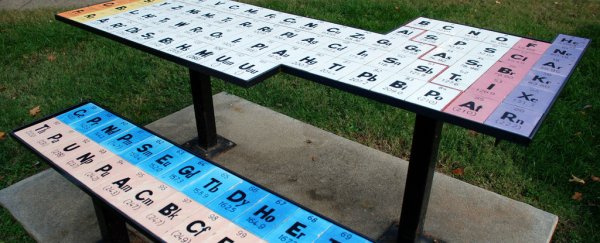Earlier this week, four new elements were permanently added to the periodic table, and we've also seen Motörhead fans attempt to get an element named after the late frontman, Lemmy Kilmister. But what are the rules that govern how an element can be named once it actually makes it onto the permanent list?
The story behind the naming of elements stretches back to 1782, when chemists first declared that a consistent system was required - this was still around a century before the modern periodic table came into being. After a long series of discussions and conferences, the International Union for Pure and Applied Chemistry (IUPAC) was established in 1919, and it's this body that still sets the boundaries for giving elements names today.
The rules, put in force in 2002, are pretty complex: whomever discovered the element (as determined by IUPAC) has the right to suggest a name. That name has to differ as little as possible between languages and should end in "-ium" (though a 2015 proposal disputes this condition).
In addition to that, the element should ideally be named after a mythological concept or character, a mineral or similar substance, a place or geographical region, a property of the element, or a scientist.
Once the new name has been proposed, the IUPAC has the final say on what the name is. If a particular moniker is rejected, it cannot be transferred to another element at a later date.
But even with the IUPAC in charge of the rules, there's often heated debate and controversy when it comes to naming the elements that make up the periodic table.
Some scientists refer to the period between the 1960s and the 1990s as the 'Transfermium Wars' ("transfermium" meaning "after element 100"). During this period, research teams from Russia, the US, and Germany were racing each other to discover the remaining synthetic elements - ones that are man-made rather than naturally occurring. The fact that some of these elements were discovered at almost the same time by competing teams made matters worse.
In the end, the IUPAC decided that the US could have elements 104 (rutherfordium) and 106 (seaborgium), Russia would be awarded 105 (dubnium) and 107 (bohrium), and Germany got the naming rights to 108 (hassium) and 109 (meitnerium). That decision was taken in 1997 and the refreshed naming rules came into force in 2002.
Which brings us back to the four new elements that finished off the seventh row of the periodic table this week. They all have temporary names (and numbers), but now they're going to need official names - and that could take some time. But watch this space, because it's going to be awesome when it happens.
